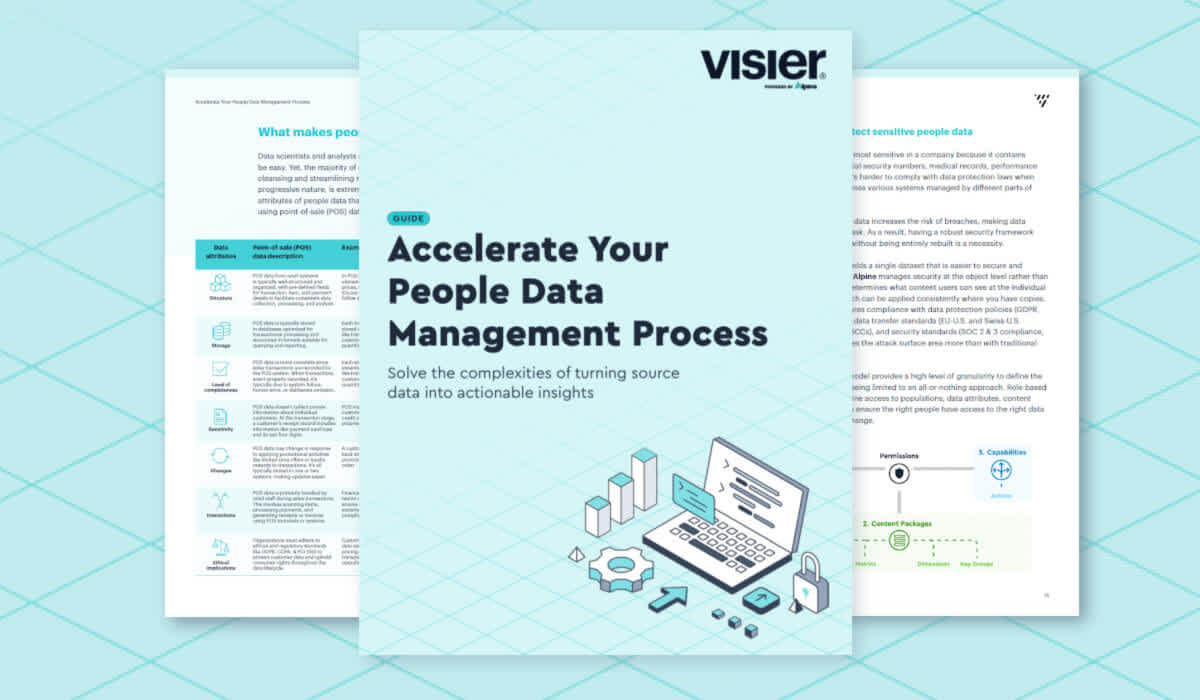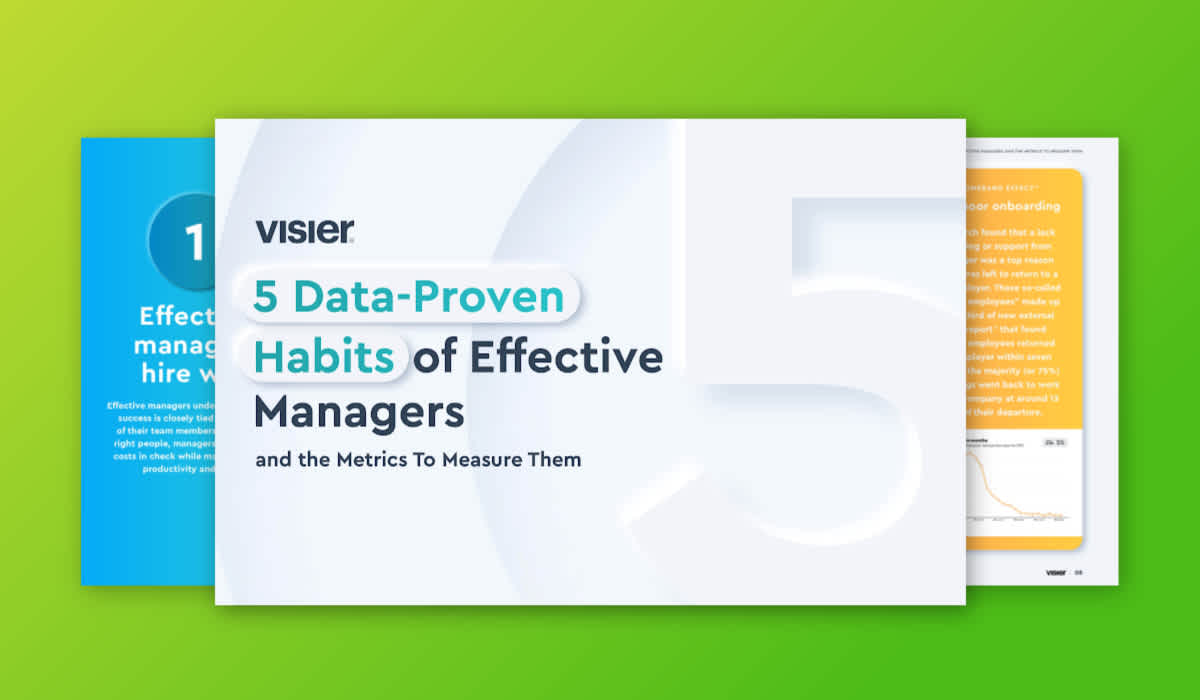5 Ways to Develop the Right Employee Skills Plan
Skill data has become a crucial tool for companies Here are 5 innovative ways companies are using skill data to empower companies and their people.

Skills are the core of how we approach work, collaboration, and building effective teams — but collecting data about skills, and generating value from it is a complex task.
At our recent Outsmart panel, “Solving the Skills Challenge with Data,” Ian Cook, Visier’s VP of People Analytics, spoke with Sergey Bukharov, CPO at Skyhive, Roel Duess, Head of Global Solutions Consulting at Fuel50, and Mark Hanson, Product Owner of Skills at Emsi, about the challenges of skills development in today’s workforce.
Here are five ways these innovative companies are using skill data to empower companies and their people to embrace the constantly changing labor market:
Matching workers to career opportunities
Building skill-based profiles
Developing data-driven reskilling strategies
Analyzing the labor market in real time with AI
Creating a universal language of skills
We dive deeper into these strategies below.
1. Matching workers to career opportunities
Skill data empowers both people and companies to understand how they work in a much more holistic, nuanced, and realistic way than a basic job title and description. Fuel50, an internal opportunity marketplace, is using that data to help employees keep their careers moving forward—without devoting hours every week to manually searching for opportunities.
By both cataloging available opportunities, and suggesting them to people for whom they may be well-suited, the system creates opportunities visibility. Everyone benefits — both ambitious workers who want to keep advancing along with their industry, and companies who want to tap into the wealth of talent they already have in-house.
The marketplace also expands the definition of opportunity beyond our historical model of linear career progression. Users are offered both new roles to move into, and projects in areas that may be new to them (but complement or help them build out their existing skill sets).
2. Building skill-based profiles
In order to create this marketplace, Fuel50 collects skills data on roles and opportunities, but its matching power also stems from its uniquely detailed “skill-based profiles” of an organization’s people. In addition to capturing employees’ existing skills, the profiles also suggest directions for future growth by including workers’ values, working styles, interests, and ambitions.
In combination with the skill data included in the marketplace’s role and opportunity descriptions, the platform’s AI- and psychology-driven system brings the kind of individualized career coaching to all workers that would previously have been accessible only to a few top performers.
3. Developing data-driven reskilling strategies
Whereas Fuel50’s approach to reskilling focuses on the individual, Skyhive’s enterprise reskilling platform uses data to help companies plan more broadly and strategically.
By analyzing both the skills a company’s people already possess, and the movements happening within labor markets more generally, companies can identify gaps between the skills where they already excel—and those that are in demand, but do not exist adequately within their organization just yet. Then, companies can plan proactively to keep up with their industry and adapt to major workforce disruptors like automation.
Embracing reskilling and upskilling in this way helps companies avoid the stress and uncertainty people often experience as they anticipate the labor market changing, and worry that their skills may not keep up.

4. Analyzing the labor market in real time with AI
Analyzing the labour market at the level of detail and accuracy that Skyhive is able to is no easy task—in fact, it’s only possible because of the enhanced computing powers of artificial intelligence.
To understand the labor market and track its changes in real time, Skyhive processes millions of documents, job descriptions, CVs, government databases and more. This type of analysis would previously have taken a team of data scientists several months to complete, and produced only a static, instantly outdated snapshot of the labour market.
With this real-time, AI-powered form of analysis, companies are armed with the knowledge to make sure the efforts and resources they are directing towards reskilling will have the desired impact.
5. Creating a universal language of skills
Because skills are inherently subjective and not always easy to quantify, language is a major barrier that prevents different components of the labor market, like training institutions, employers, and individuals seeking work, from communicating effectively with one another.
Emsi is a labor market information firm that is working to reduce those inefficiencies by creating a universally-shared “language of skills” that will standardize how we talk about jobs and what they entail.
The company aggregates this information from millions of job postings, resumes, and online profiles, then uses it to create and maintain an open-source skill library. This library is shared with the workforce through Emsi’s higher education, community insights, and enterprise staffing divisions to ensure these often disconnected sectors are using a common language to communicate about the skills they value.
Skills for the workforce of the future
Skills have always been the backbone of an effective workforce — that isn’t a new development. But today, in a business world that is increasingly driven by data, we must be able to quantify them. Vague, intuitive job descriptions and unclear, organization-specific language will not help companies or their people adapt and thrive in a landscape where the value of, and demand for, specific skills is changing more quickly than ever before.
It’s a complex topic to tackle — but companies like Fuel50, Skyhive, and Emsi are proving that companies now have the power to make skill data a major driver of organizational growth. If organizations use skill data as a tool for strategically planning how they will adapt to this changing marketplace, they will find that keeping up with this accelerated rate of change is not only possible, but exciting.
On the Outsmart blog, we write about workforce-related topics like what makes a good manager, how to reduce employee turnover, and reskilling employees. We also report on trending topics like ESG and EU CSRD requirements and preparing for a recession, and advise on HR best practices how to create a strategic compensation strategy, metrics every CHRO should track, and connecting people data to business data. But if you really want to know the bread and butter of Visier, read our post about the benefits of people analytics.


